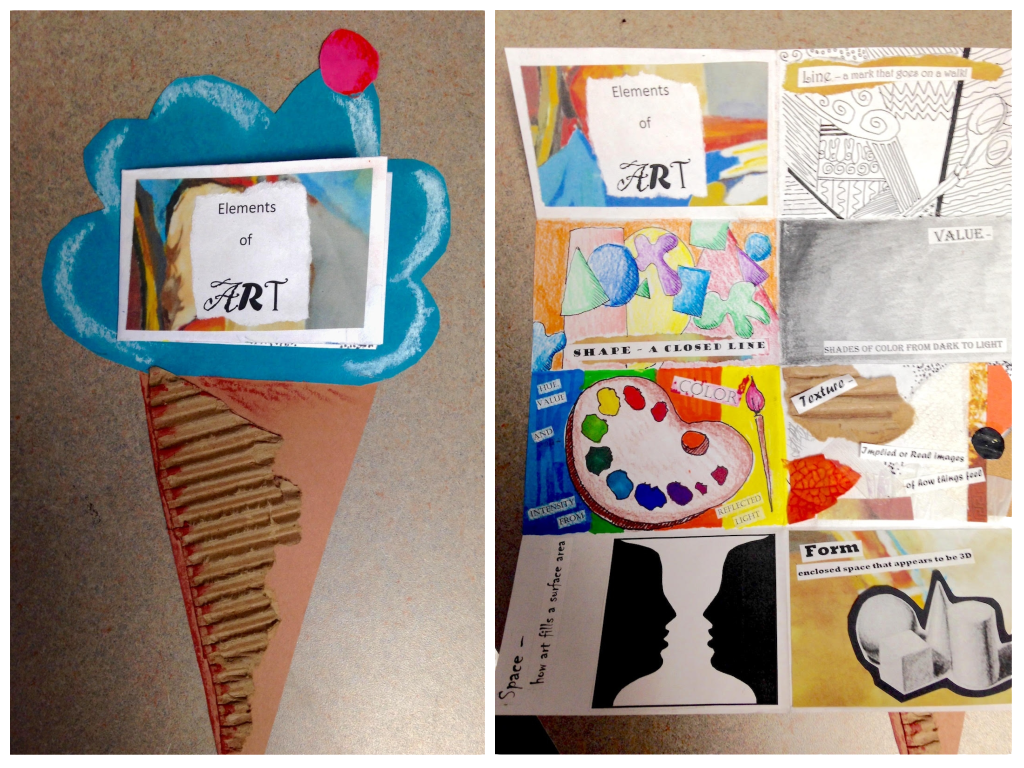When planning curriculum, it can be incredibly helpful to have a list of knock-out art lessons from which to choose. That’s part of the reason you can find so many in my article, “Everything You Need to Design the Perfect Intro to Art Course.”
However, before you can choose specific lessons, it’s important to have an idea of the overarching concepts you want students to gain in the course as well.
Here are 10 concepts every Intro to Art course should include.
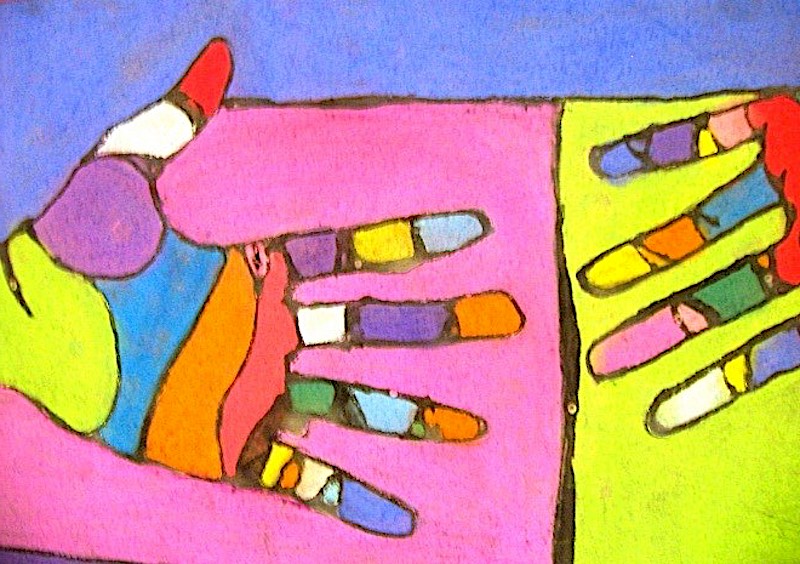
For this article, I’m going to talk about an Intro to Art course that mainly focuses on 2-D artwork. However, many of these concepts could translate to a course that incorporated 3-D work as well.
1. Art Rules
Before considering what to teach, you need to consider WHO you are teaching. To be successful in the art room, your students need guidelines, rules, and expectations.
Many art teachers have a whole list ready to go when students walk into their rooms. But, I take a different approach. I’ve found having your students help you write the art room rules gives them a sense of ownership. Therefore, each year my rules, or laws as I like to call them, change a bit.
However, these 3 always remain the same:
- A – Act appropriately
- R – Respect everything and everyone
- T – Try…and you can!
2. Elements of Art
The building blocks of art are important. As much as some art teachers don’t want to talk about or teach the elements, I find them to be essential talking points to start off a school year. To me, not teaching the elements and expecting kids to make art is like not teaching the alphabet and expecting kids to read and write.
Ice Cream Cone Study Guides
The quickest, most effective way I’ve found to teach the elements is through a project I call “Ice Cream Cone Study Guides.”
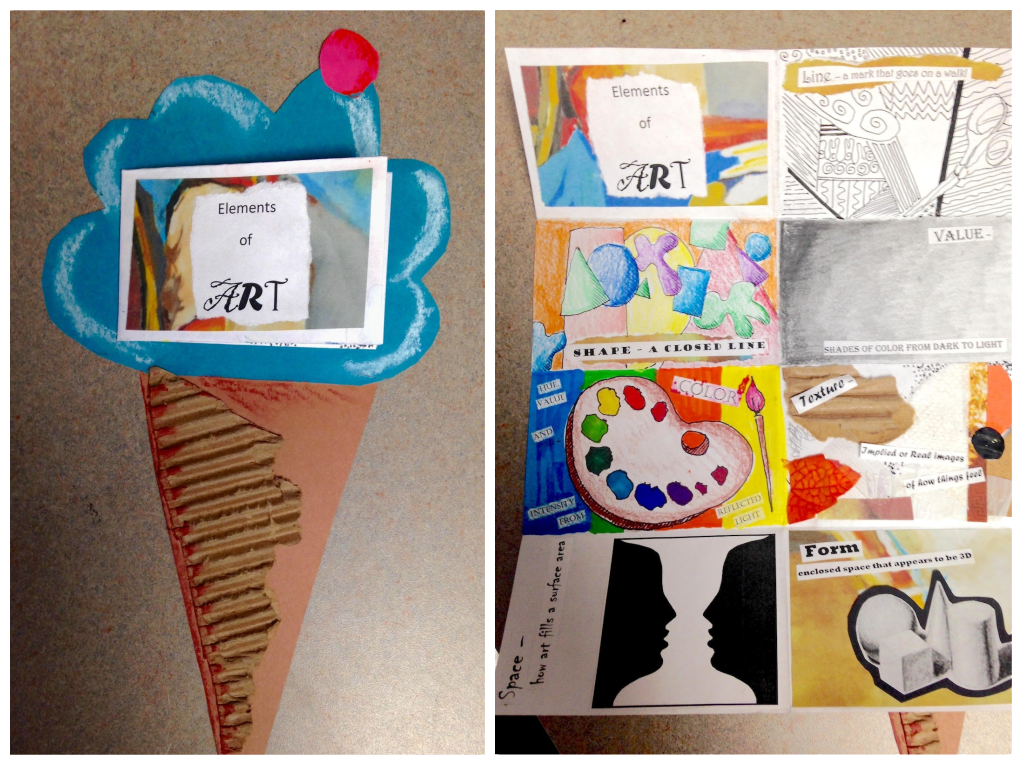
It’s difficult for students to remember all seven elements of art.
- Line
- Shape
- Value
- Color
- Texture
- Space
- Form
That’s why I teach my students about the elements using a mnemonic device about ice cream.
- Large
- Scoops
- Vanilla
- Chocolate
- Tastes
- So
- Fine
But is that enough? I don’t think it is, so the next thing I have them do is create an “Elements of Art Ice Cream Cone Study Guide!” It is a simple, two-day lesson that is wonderful in helping students retain this valuable information.
I give each student an 8.5 x 11 piece of copy paper. They fold the paper three times, creating eight rectangles. In the first rectangle, they put the title, “Elements of Art.” They can also choose to give their guide a creative title if they like!
Then, they must put a different element in each of the remaining sections. For each section, they must look up the definition and write it in their own words. From there, they can design the study guide any way they like.
Finally, they must create an ice cream treat on which to adhere their study guide. And, Wow! They have created wonderful artistic artworks that teach our kids so much!
3. Contour Line Studies
I honestly believe the most important thing in art is understanding contour line. When students grasp how to visually describe the edges of an object, they begin to see and draw objects differently.
I generally start by having students trace their hands and then look carefully at the lines in their palms that make up their hands. There are several creative ways to do this. One of the easiest and most successful is by laying a transparency over their hand and tracing it with a permanent marker.
4. Color Theory
Color theory matters! Students need to know what colors work well together and why. One of the best ways to teach color theory is to have an open studio day where students can experiment with a variety of media. Once they create mud, they learn pretty quickly what colors don’t work well together.
After they experiment, I talk about the color wheel and all that’s involved with color theory. Primary, secondary, complementary, analogous, warm, cool, tints, shades, etc.! The list can feel endless. I recommend spreading these lessons out over time or giving students the opportunity to create their own creative color wheels as seen in this article.
And, if you’re interested, Johanna Russell also shares more meaningful ways to get your students excited about color theory in the PRO Learning Pack Color Theory Basics.
5. Direct Observation Studies
I think it’s important to give students a small still-life project early on in the course. Getting them used to drawing from life helps to prepare them for this thing we call art. Learning to see and render well are skills students can take into all other work they create.
You can do a traditional still-life project or create visual journal prompts that help develop these skills.
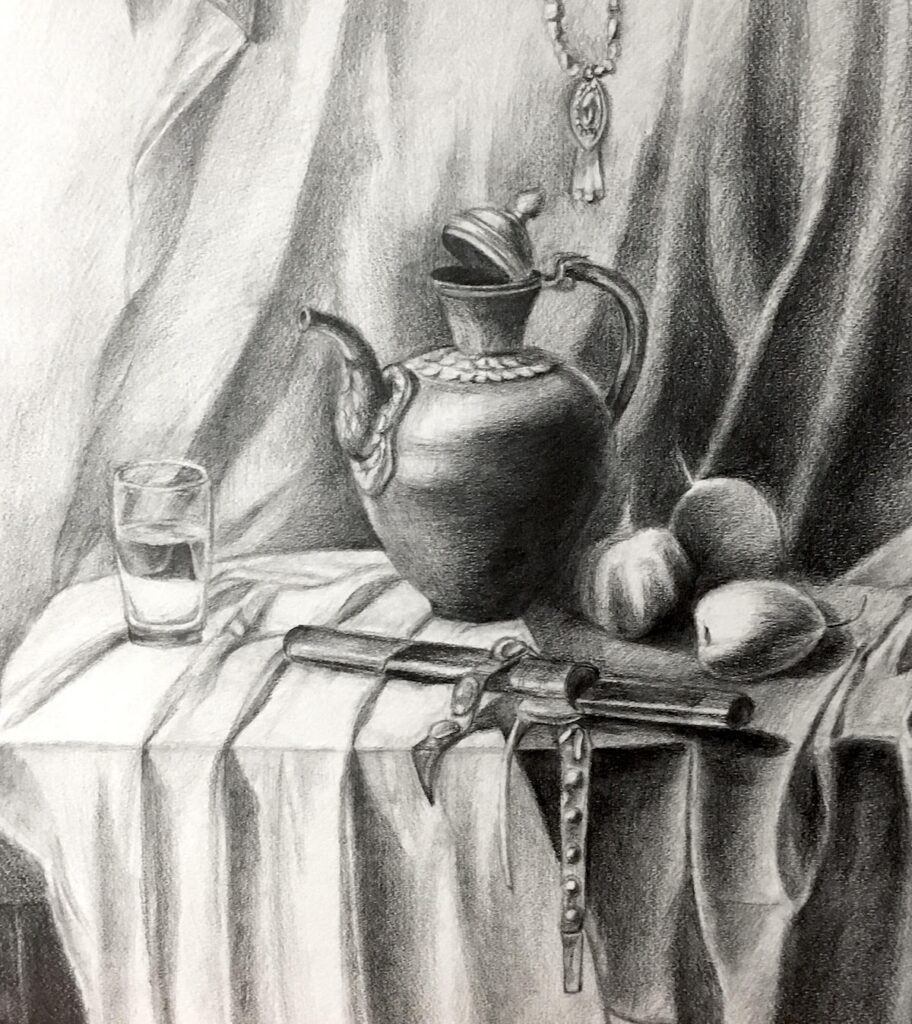
6. Principles of Design
Once students begin to see the importance of the art elements, it’s time to introduce them to the principles of design. In simple terms, the principles are how you organize the elements.
In general, people agree on the following 7 principles of design.
- Balance
- Contrast
- Emphasis
- Pattern
- Unity
- Movement
- Rhythm
However, there are other principles to consider teaching as well! In my classroom, I also like to include Variety and Repetition. Using the first letter of each of these nine principles, I give them another mnemonic device: MR. BV CUPER.
Again, I have my students find the definitions of these words about halfway through the semester. Once they have done that, I have them gauge which ones they feel are the most important, and we talk about it. Of course, there is no right answer. But, it’s fun to see them have a lively discussion using art history prints from the masters.
7. Media Manipulation
Giving students open studio days is good for everyone’s soul. It makes for a lively and fun day of experimenting with media and reminds kids that there are really no mistakes in art. Plus, they can use what they learn through experimentation in their future work.
Open studio days also are a great time to revisit your cleanup rules and routines!
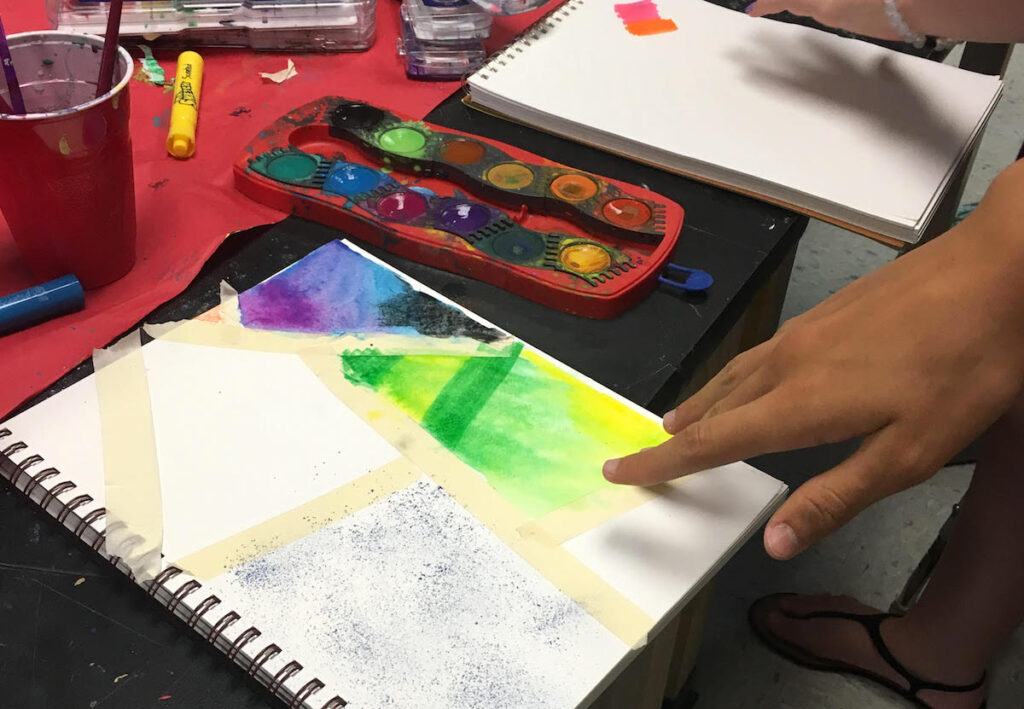
8. Composition
Once students have a good grasp of the basics, it’s time to teach the art of composition.
The three biggest ideas I hit with my students are:
- The “MOP” (middle of the page) is a no-no!
- Crop or go off the page to make things more interesting.
- Be sure to consider negative space.
Many lessons teach composition, but one of my favorites is a shoe drawing still-life. To start, have each student take off a shoe. Then, have them set up a collaborative still-life with their shoes. Students must carefully consider which part of the still-life they want to draw by considering the three ideas above. After students draw their shoes, they add mixed media to create exciting, original works.

9. Visual Journals
I believe visual journals are a necessity in an introductory art course. Visual, prompt-based journals get your students practicing their drawing and compositional skills weekly. This is where students are encouraged to take risks, experiment, play, draw, add text, collage, and create from their hearts.
These journals become a storehouse full of creative ideas. Often, students cherish these and take them on their artistic journeys into advanced art courses and beyond. Visual journals are also a great place to put service learning and art history lessons into your curriculum. You can read all about visual journals in the article, “50 Visual Journal Prompts to Promote Drawing and Creative Thinking Skills.”
10. Authentic Assessment
Authentically assessing our students matters! Regurgitating definitions onto a multiple choice exam is not my idea of an effective assessment. But, hands-on art lessons that review a semester’s worth of learning sure is! That’s why I like to give my intro to art students a summative assessment bookmaking project. You can read all about it in the article, “Use Bookmaking As An Authentic Summative Assessment to Engage Your Students.”
This lesson is the perfect way to see all that your students have learned and retained from a semester’s worth of art. It’s one of my favorites!
So there you have it, my list of the top ten things all Intro to Art courses should cover. I am anxious to hear your thoughts and what you might add. I think it’s the most important course we teach, so it’s necessary to reflect on what students truly need to take their thinking and their art to the next level.
What are the most important things to teach your Intro to Art students?
Do you agree this is the most important course your students will take? Why or why not?
Magazine articles and podcasts are opinions of professional education contributors and do not necessarily represent the position of the Art of Education University (AOEU) or its academic offerings. Contributors use terms in the way they are most often talked about in the scope of their educational experiences.
